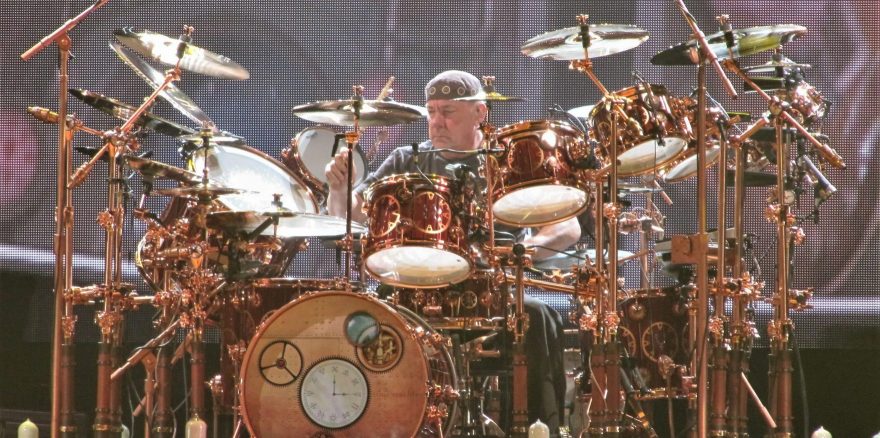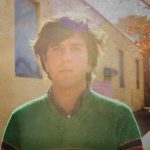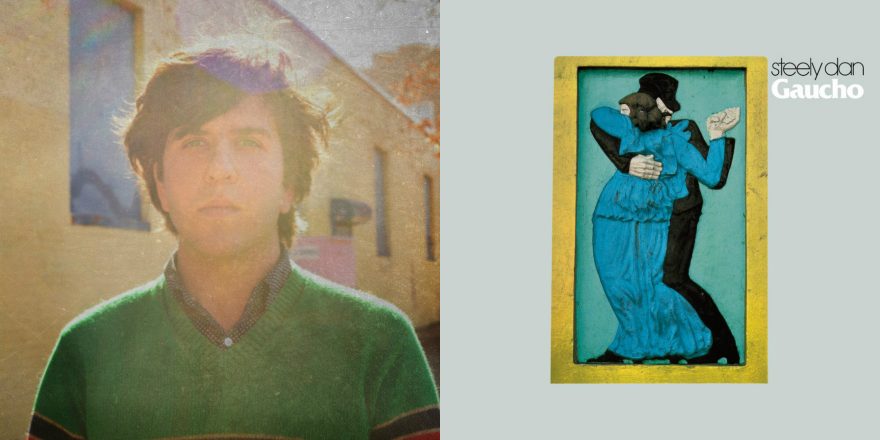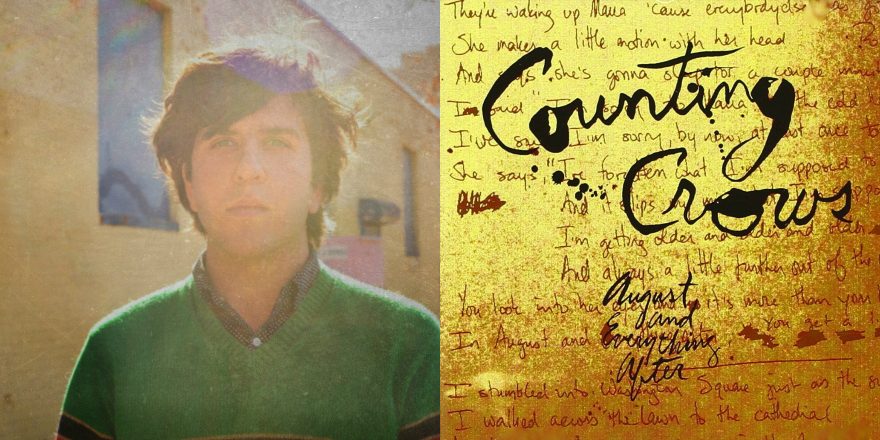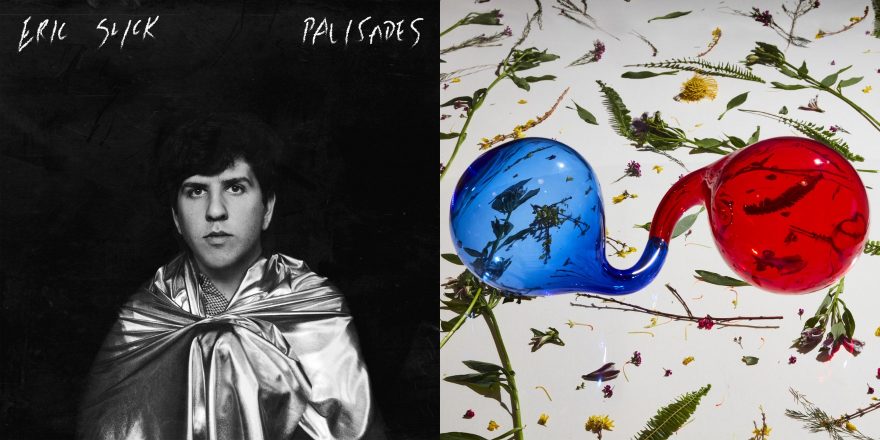When you’re a young drummer, you go through phases of drum god obsession. From ages 4 through 8, I was taken with the polite and goofy smile of Ringo Starr: His solid backbeat on a worn VHS copy of Ready Steady Go! was the inspiration that led me to becoming a musician. When I was 9, it was Keith Moon destroying a huge Premier kit with dynamite on a worn VHS copy of The Kids Are Alright. When I was 11, it was John Bonham crushing a heavy groove on an Amber Ludwig Vistalite kit on a library DVD of The Song Remains The Same. When I was 14, it was Neil Peart. I heard Rush’s “Tom Sawyer” on the radio in my dad’s jet black Jeep Cherokee while we were on vacation in Ocean City, NJ.
There was a seismic shift in my brain that day. I had flirted with getting into progressive rock and knew some songs that were considered pillars. Yes’ “Roundabout,” ELP’s “Karn Evil 9,” and King Crimson’s “21st Century Schizoid Man” were songs that I’d heard on WMMR, the local classic rock station in my hometown of Philadelphia. My family were also dyed-in-the-wool prog-rock obsessives. Let’s face it, Philly is a prog town, a fact that I am still extremely proud of. I mean, look at Gritty. He could’ve been a creature on the inside of a Gentle Giant record.
There was something about “Tom Sawyer” that felt more like the music I wanted to hear. I loved that it sounded simultaneously complex and straightforward. The song had passages that were in an odd time signature, 7/4 to be exact, but it also had a deep pocket. It didn’t sound like too many people playing at once — it sounded like three people who were absolute monsters at their respective instruments. It started my lifelong love affair with late-’70s synthesizers, specifically the Oberheim OB-X. What was that chorused-out guitar? I had no idea. This was before the internet had replaced The Rolling Stone Rock And Roll Encyclopedia in my life. But as a drummer, I kept gravitating towards Neil. I hadn’t heard a descending tom fill like that in my life. How could someone play those blistering single-stroke rolls without getting a ganglion cyst? I didn’t know you could have concert toms, roto-toms, multiple kick drums. It sounded so musical to me. It didn’t feel like a single note was wasted.
This began my teenage preoccupation with all things Neil Peart. The next day, I begged my dad to take me to the Surf Mall, a massive aquamarine boardwalk shop that catered to people who wanted to buy Reservoir Dogs posters and tie-dyed Dark Side Of The Moon hoodies. I was positive they would have a Rush shirt, and lo and behold, I had my sights set on one that said “2112” on it. I then begged my dad to take me to Shore Things, a CD store where in earlier years I snagged a used copy of 311’s “Blue Album.” They had one copy of Rush’s 1981 masterpiece Moving Pictures. I went back to our rental house and feverishly put the CD in my Discman. I burned through “Tom Sawyer.” I gasped at the opening harmonic guitar of “Red Barchetta” and tried to figure out what the lyrics meant. Then came the big one, “YYZ,” a song I still can’t quite figure out. It’s a rollercoaster ride instrumental that has a main theme in 10/4, an insane turn-on-a-dime quintuplet break, Neil shattering plywood and glass on downbeats, ripping tom fills, and a paradiddle beat with a soaring guitar melody. Neil deftly handled all of the changes effortlessly. “Limelight” finishes out the first side, and it still remains as one of my favorite Rush singles.
When I returned home to Philadelphia, I listened to Moving Pictures every day for months on end. I went to Tower Records and found a Rush DVD with all of their music videos. I looked at Neil’s setup and marveled at his iconic Tama rosewood/fiberglass hybrid kit. His drum tone was so precise, almost throaty. I started learning all of his licks. I wanted to be in Rush, or a band that sounded like them. I soon learned he was also the band’s lyricist. If I never knew that, I wouldn’t have started writing songs. He gave me faith that songwriting duties were not just the duties of singers or guitarists. My parents noticed that I was listening to Rush around the house a lot, and my mom reminded me that I was completely obsessed with their song “Roll The Bones” when I was 4. She also told me that when she was in labor with me, she listened to their song “Distant Early Warning” on repeat. It all started to make sense. It was more or less caked in my DNA.
We went back to Ocean City in the summer of 2002 and I heard there was an electronic drum machine at Jillian’s Arcade called MTV DrumScape. It was like a proto version of Rock Band where you could play along to a limited set of Top 40 hits. I looked into the digital screen and found “Tom Sawyer.” That summer, I became the hotshot drummer kid of New Jersey. I would egotistically wail away at “Tom Sawyer” and “Subdivisions,” desperately hoping that girls in Abercrombie and Fitch sweaters would come over and talk to me. Surprise, surprise… they didn’t.
In the fall of 2002, I was 15 and full of raging hormones. I knew that Rush was coming to the Spectrum (our late great indoor arena) on their acclaimed Vapor Trails tour. My dad came home from work one day and said, “Hey kid, WMMR is holding a drum contest to win tickets for the Rush concert. We should go down there.” I started pacing around the living room, and then decided it was a good idea. I threw on my dad’s old WMMR “Rock And Roll Animals” baseball shirt from 1984 and we ran out the door. We sped to WMMR and sure enough, there was a large rosewood TAMA kit set up in the control room. I was live on the radio, and I raced through the “Tom Sawyer” drum breaks along with a mangled version of Frank Zappa’s “Black Page #1.” I guess it did the trick, and I won the tickets.
Seeing Neil Peart play live changed my life. He had recently changed his setup to be more ergonomic and he sounded younger than he did on Permanent Waves or Signals. At one point, the band left the stage and he did a 10-minute behemoth drum solo. It had everything — electronic drums, marimba, crotales, gong drum — you name it, he had it. There was even a section where he played along to an old jazz big band, complete with a video wall synchronization. My dad picked me up from the concert, and I was more or less stunned. It was perfect.
They say that you will replay moments like this in your life forever. Whenever I sit down at a kit, I am doing an emulation of all of my heroes rolled into one, and Neil is most certainly a part of that. Sometimes when I do a fill, I am subconsciously “playing Neil.” It’s just in there, whether I want it or not. I was relieved that when I joined Dr. Dog I found out they were all Rush fans too. Recently, we’ve been putting on “Subdivisions” before our shows and we dance around the green room like lunatics. I didn’t know that Neil was ill, and I am sad that I will never get to see Rush ever again. One thing is for sure: I will be replaying that night in 2002 until it’s my time to leave this planet.


